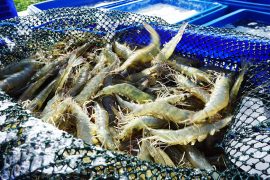
Honey bees face a multitude of complex stressors in the field
Honey bees – those buzzing dynamos that pollinate our food – are in trouble. Despite decades of study, scientists couldn’t quite crack the code of why bee colonies are collapsing. A new study is shedding light on this mystery by revealing multiple stressors that honey bees encounter on a typical day in the field.
Complex network of honey bee stressors
New research from York University indicates that honey bees are not afflicted by a lone stressor, but rather an interconnected web of threats.
“Our study is the first to apply systems level or network analyses to honey bee stressors at a massive scale. I think this represents a paradigm shift in the field because we have been so focussed on finding the one big thing, the smoking gun,” said Professor Amro Zayed.
Relentless barrage of stressors
The study broadened its scope to expose the vast network of stressors confronting honey bees. Consider their work environment: fields bursting with apples, canola, blueberries, and other crops.
These bees encounter a relentless barrage of stressors, including pesticides, viruses, parasites, and unpredictable environmental changes.
The result of this exposure is a complex and harmful entanglement, where any single stressor has the potential to intensify the impact of others.
The researchers uncovered a startling reality: honey bees grapple with an average of 23 stressors simultaneously.
This translates into a staggering 307 potential interactions, all with the capacity to undermine their health. Furthermore, certain stressors emerge as particularly influential, further compounding the damage.
Influencer stressors for honey bees
The researchers call them “influencer stressors.” Just like social media influencers, certain viruses and pesticides are the ringleaders, making other stressors even nastier.
“Understanding which stressors co-occur and are likely to interact is profoundly important to unraveling how they are impacting the health and mortality of honey bee colonies,” noted study lead author Sarah French.
“There have been a lot of studies about major pesticides, but in this research, we also saw a lot of minor pesticides that we don’t usually think about or study. We also found a lot of viruses that beekeepers don’t typically test for or manage. Seeing the influencer stressors interact with all these other stressors, whether it be mites, other pesticides or viruses, was not only interesting, but surprising.”
Significance of identifying honey bee stressors
Honey bees play an indispensable role in our food production and economy, making their protection a significant concern.
These small pollinators are vital for the fertilization of many crop species, contributing to the diversity and availability of fruits, vegetables, and nuts.
Without honey bees, many of the foods we take for granted could become scarce and more expensive. The economic impact is profound; honey bees add billions of dollars to global economies through their pollination services. In the U.S. alone, they contribute over $15 billion to the value of crop production.
Colony collapse disorder
The urgency to understand and protect honey bees from their stressors is underscored by the troubling rates at which colonies are declining.
This decline, often referred to as Colony Collapse Disorder, is marked by the mysterious and sudden disappearance of worker bees from a colony, leaving behind a queen, food, and a few nurse bees to care for the remaining immature bees.
Despite extensive research, the precise causes of these die-offs remain elusive, complicating efforts to devise effective interventions.
The situation is dire; some regions report winter losses of up to 60 percent of their bee colonies. These losses are not just numbers; they represent a significant threat to biodiversity, food security, and agricultural economies.
The causes of bee decline are believed to be multifaceted, involving a combination of environmental stressors such as pesticides, habitat loss, climate change, nutrition deficit, parasites, and pathogens like the Varroa mite and viral diseases.
Broader implications
Each of these stressors alone is a threat, but in combination, they can lead to devastating effects on honey bee populations.
Understanding the complex interactions between these stressors and developing strategies to mitigate them is crucial. It also maintains the health of natural ecosystems by supporting the growth of trees, flowers, and other plants.
Therefore, protecting honey bees is not merely an act of environmental stewardship—it is a critical necessity for sustaining our natural resources and agriculture.
Hope isn’t lost. The study is part of a larger project called BEECSI, which uses ‘omics’ tools to help beekeepers assess bee health. The more we understand about these complex webs of stressors, the better we can protect these vital pollinators.
So, the next time you munch an apple or admire a field of wildflowers, remember the incredible hard workers behind them, and the fascinating (if somewhat stressful!) world they navigate.
The study is published in the journal Current Biology.
—–
Like what you read? Subscribe to our newsletter for engaging articles, exclusive content, and the latest updates.
Check us out on EarthSnap, a free app brought to you by Eric Ralls and Earth.com.
—–













